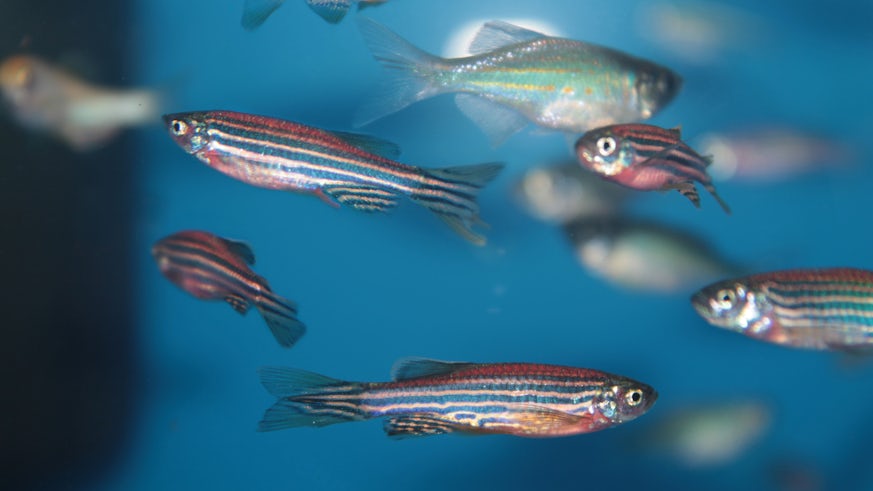How do zebrafish develop their stripes?
28 September 2017

A Cardiff University mathematician has thrown new light on the longstanding mystery of how zebrafish develop the distinctive striped patterns on their skin.
In a new study, Dr Thomas Woolley has simulated the intricate process that sees the pigmented skin cells of the zebrafish engaged in a game of cat and mouse as they chase after each in the early developmental stages before resting to create a final pattern.
Dr Woolley discovered that a key factor is the angles at which the cells chase after each other, and these angles can determine whether a zebrafish develops its distinctive stripes, broken stripes, polka-dot patterns or sometimes no pattern at all.
The findings have been presented in the journal Physical Review E.
Iconic patterns
Rather than have a pattern ingrained in their genetic code, zebrafish start their lives as transparent embryos before developing iconic patterns over time as they grow into adults. As is often the case in nature, many possible mutations exist and this can dictate the pattern that develops in the zebrafish.
Several researchers have studied how and why these pattern form and have concluded that it’s a result of three types of pigment cells interacting with one other. More specifically, black pigment cells (melanophores), yellow pigment cells (xanthophores) and silvery pigment cells (iridophores), chase after each other until a final pattern is reached.
As hundreds of these chases play out, the yellow cells eventually push the black cells into a position to form a distinct pattern.
Dr Woolley, from Cardiff University’s School of Mathematics, said: “Experimentalists have demonstrated that when these two types of cells are placed in a petri dish, they appear to chase after each other, a bit like pacman chasing the ghosts. However, rather than chase each other in straight lines, they appear to be chasing each other in a spiral...”

“My new research has shown that the angle at which the cells chase after each other is crucial to determining the final pattern that we see on different types of zebrafish.”
In his study, Dr Woolley performed a number of computer simulations that took a broad view of how cells move and interact when the zebrafish is just a few weeks old. Different patterns were then spontaneously generated depending on the chasing rules.
By experimenting with different chasing angles in his simulations, Dr Woolley was able to successfully recreate the different patterns that are exhibited by zebrafish.
Share this story
The School is committed to excellent teaching, scholarship and research, and to supporting its students to fulfil their academic potential.


